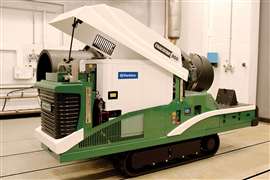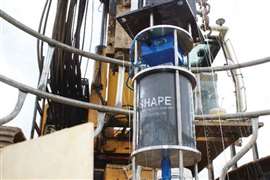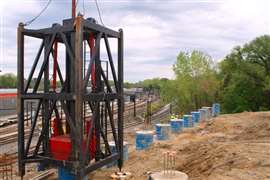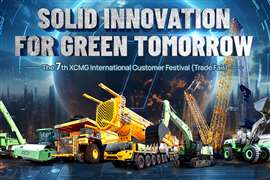Why construction needs to crawl before it can walk with tech
28 January 2025
Technology has the power to transform construction, but it can, at times, feel overwhelming – there are lots of companies doing similar things and what can feel like a constant stream of updates. The effort required though is well worth it considering the productivity and efficiency gains that technology can bring.
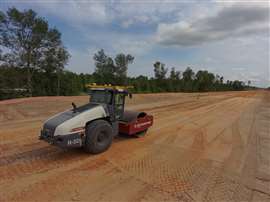 Autonomy is being trialled on numerous projects around the world. Image: Ferrovial
Autonomy is being trialled on numerous projects around the world. Image: Ferrovial
According to Spanish-based multinational infrastructure company Ferrovial, the benefits can be as high as a 35% increase in speed and a staggering 145% increase in grading accuracy.
In an interview at Trimble Dimensions in Las Vegas, US, Luis Amorim, head of open innovation, Ferrovial Construction, and Moises Hinojosa, chief information officer at Webber, a Ferrovial subsidiary, spoke to Construction Briefing about a wide range of topics, including the gains that are there for the taking by those that invest in the right technology.
“We took an experienced operator and an inexperienced operator and they needed to grade to a certain slope, certain parameters. We outfitted one of our excavators with the automatic [grade control]. The experienced person did it without and did it fairly well, because he’s a 20 plus years operator. The inexperienced operator didn’t know quite how to do it,” says Hinojosa.
What the study found was that both the experienced and inexperienced operator increased their speed by approximately 35% by using the automatic grade control. But the really big increase was in accuracy.
“Both increased from an accuracy standpoint. The experienced increased his accuracy by about 15%. The inexperienced increased it by 145%,” continues Hinojosa.
“We’re trying to train our inexperienced operators faster in order for them to be able to do the same thing that an experienced one does because of the labour shortage that we’re encountering, which is going to get worse in the future.”
Choosing the right approach to construction technology
Crawl, walk, run is a common business strategy; a way of breaking down complex tasks into smaller, more manageable steps. It’s also the approach that Ferrovial are taking towards construction technology.
The crawl would be classified as machine control and assist features, such as the example highlighted above – something that can be implemented now. The run is full autonomy and this is for the future, although there are test programmes going on now. One of these is with a fully autonomous Dynapac compactor that Ferrovial is testing on a site in Texas, US.
Talking about the compactor, Amorim comments that, “We saw that the autonomous did the best job. We could compare the heat maps of the rolling and the lanes. However, we cannot deploy an autonomous roller, as regulations stand, in the middle of a job,” he reveals.
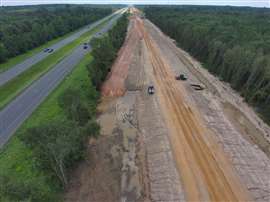 Some technology is ready for use now, but regulatory and legal hurdles remain. Image: Ferrovial
Some technology is ready for use now, but regulatory and legal hurdles remain. Image: Ferrovial
“But clearly the technology works and it’s the more efficient way, the best quality and the safer way. But, at the moment, until everything around it at least talks with it, we cannot deploy it or leave it to roam the site native.”
The technology itself might be ready, but there are issues with regulations and legislations. This, says, Amorim, is the same with auto steer.
“The auto steer does full autonomy. Yes, there’s controls. But, right now, those controls and regulations haven’t been standardised across the board. Who accepts the risk if something happens? Those are the things that haven’t been vetted yet.”
How to get staff to buy into technology
Getting staff to embrace technology can seem like a challenge but the answer, according to Amorim and Hinojosa, is the technology itself. They estimate that 80% of Ferrovial’s projects use technology and that, the more that workers use it, the more they trust it.
“Once the operators are utilising it, they’re going to gain the trust because they can override it at any time. We saw that in our trials; they’d first start having their hand on it [the control], because they didn’t trust it, but then they would let it go… and it would perform the way they expected,” says Hinojosa.
“What we’re hoping is that with the operators becoming very familiar with assisted technologies, once we go to full autonomy, these operators are going to be able to operate multiple pieces of equipment in a certain workflow on our various projects.
“Then we can gain all of the benefits of autonomous and the safety aspect, because we no longer have somebody inside the cab. There are also ESG benefits, because a lot of the autonomous and the pre mapped ways mean we can do the work better faster and with less passes,” finishes Hinojosa.
The future of this technology is a world where humans, ultimately, have to do less of the work themselves. Amorim says that in the near-future, “The technology is going so fast that most of the machines will be autonomous with operators in the cab.”
Both of them point out that this is likely to not be the case for excavators, because of the sheer number of different tasks that an excavator may do, but more for other equipment that has a defined and narrower scope of operations, such as rollers and dozers.
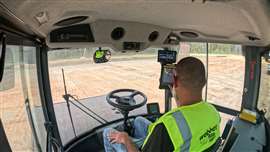 Technology can help with construction’s skills shortage. Image: Ferrovial
Technology can help with construction’s skills shortage. Image: Ferrovial
Hinojosa speculates that in the future there could be, “one guy operating a paver or a milling machine with automatic assistance, but then all the other pieces of equipment that help facilitate his operation are autonomous.”
Amorim chimes in, saying that, in the future, “If you went to a site, I am sure you would see a compactor there, and the operator is doing absolutely nothing. He could even take his boots off!
“Dozers have a very similar mechanism to compactors. And then we just need the graders, very similar machine equipment, so a small jump in technology.
“The only thing we’re seeing might be more complicated are the pavers. We’ve looked at the workflow of earthworks, of building a road. That’s what we do the most. Hopefully in two years we’ll have this workflow much more efficient and effective with operators in the cab that don’t need 20 years’ experience.
“Our processes will be hardened by then – we’ll be ready for when we can take our operators from the cab, because we know what we need to do.”
STAY CONNECTED



Receive the information you need when you need it through our world-leading magazines, newsletters and daily briefings.
CONNECT WITH THE TEAM










